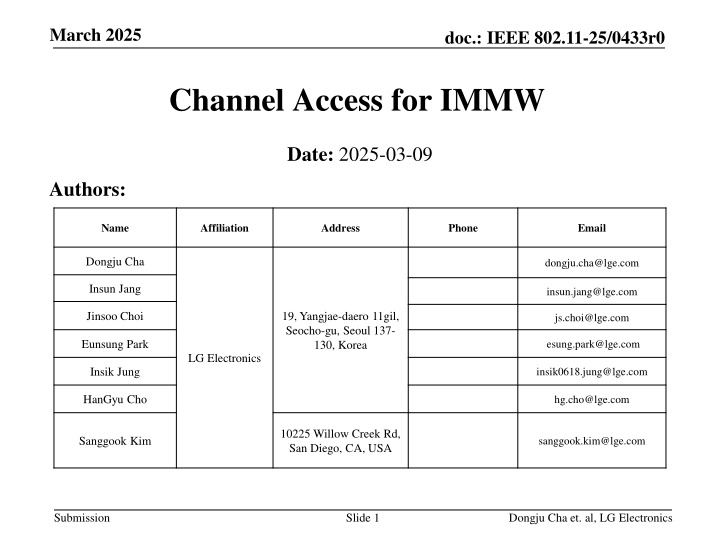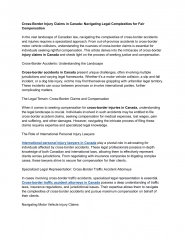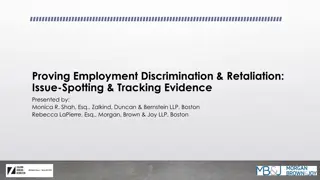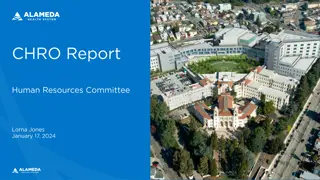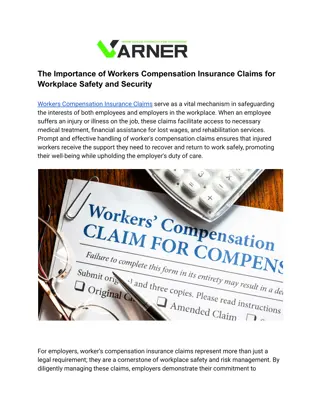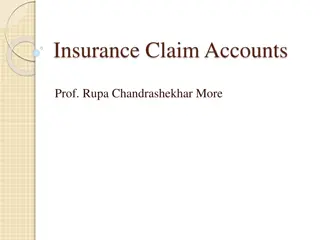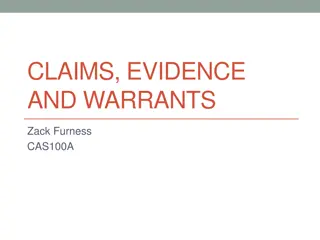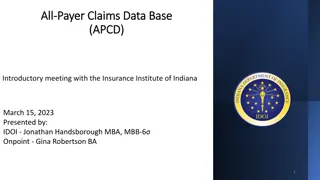ICRMP's Retaliation Claims Analysis
Delve into the comprehensive analysis of ICRMP's biggest loss driver, Sam Angell, along with detailed data on employment practices liability claims and the primary root causes. Explore termination reasons and claim distributions by department, as well as discrimination and retaliation breakdowns. Uncover valuable insights on retaliation, whistleblower protection, and best practices in handling employee issues. Stay informed to prevent costly incidents and legal risks.
Download Presentation

Please find below an Image/Link to download the presentation.
The content on the website is provided AS IS for your information and personal use only. It may not be sold, licensed, or shared on other websites without obtaining consent from the author.If you encounter any issues during the download, it is possible that the publisher has removed the file from their server.
You are allowed to download the files provided on this website for personal or commercial use, subject to the condition that they are used lawfully. All files are the property of their respective owners.
The content on the website is provided AS IS for your information and personal use only. It may not be sold, licensed, or shared on other websites without obtaining consent from the author.
E N D
Presentation Transcript
March 2025 doc.: IEEE 802.11-25/0433r0 Channel Access for IMMW Date: 2025-03-09 Authors: Name Affiliation Address Phone Email Dongju Cha dongju.cha@lge.com Insun Jang insun.jang@lge.com 19, Yangjae-daero 11gil, Seocho-gu, Seoul 137- 130, Korea Jinsoo Choi js.choi@lge.com Eunsung Park esung.park@lge.com LG Electronics Insik Jung insik0618.jung@lge.com HanGyu Cho hg.cho@lge.com 10225 Willow Creek Rd, San Diego, CA, USA Sanggook Kim sanggook.kim@lge.com Submission Slide 1 Dongju Cha et. al, LG Electronics
March 2025 doc.: IEEE 802.11-25/0433r0 Introduction Several contributions considers throughput enhancement and latency reduction as main target objective for IMMW [1] ~ [4] Also, contributions have almost identical view of including mmWave link as part of MLO along with other sub-7GHz links For convenience, we call STAs (or APs) operating on mmWave bands mSTA (or mAPs) and also call STAs (or APs) operating on sub-7GHz bands sSTA (or sAPs) To achieve the target objective, efficient channel access in mmWave band should be studied In this contribution, we share our thoughts on channel access for IMMW Submission Slide 2 Dongju Cha et. al, LG Electronics
March 2025 doc.: IEEE 802.11-25/0433r0 Recap: General Channel Access (ad/ay) Access periods within a beacon interval is divided into Beacon Header Interval (BHI) and Data Transmission Interval (DTI) DTI is access period that is mainly for data transmission It can be subdivided into CBAP and SP, which can appear in arbitrary combinations and it is scheduled by AP during BHI using DMG/EDMG Beacon CBAP follows the rules of EDCA, in which STAs compete with each other SP is scheduled contention free interval that are allowed only for the dedicated pair of STAs * Contention Based Access Period (CBAP) * Service Period (SP) Submission Slide 3 Dongju Cha et. al, LG Electronics
March 2025 doc.: IEEE 802.11-25/0433r0 General: Channel Access For mmWave link, sAP can schedule the service periods (SP) for frame exchange between mSTAs (e.g., mAP and mSTA) and within scheduled SP, how to design channel access to need to be discussed Dedicated SP: Service period that is dedicated only to the exclusive pair of STAs Ensures guaranteed access and reduced channel access delay to the medium for high-priority or latency sensitive traffic, e.g., XR, gaming Beamforming overhead can be reduced since STAs have dedicated access to the channel Non-Dedicated SP: Service period that is accessable for all associated STAs It enables multiple STAs to access the channel dynamically following EDCA rules and is suitable when strict scheduling is not required, e.g., unpredicatable traffic pattern Submission Slide 4 Dongju Cha et. al, LG Electronics
March 2025 doc.: IEEE 802.11-25/0433r0 Design Principles Enable mmWave channel access with simple changes to the baseline including followings Assuming no management frame (e.g., Beacon) to be transmitted in mmWave bands Considering MLO, these can be transmitted through sub-7 GHz band to reduce management overhead and power consumption Scheduling service periods (e.g., dedicated SP and non-dedicated SP) between STAs in mmWave link can be setup through sub-7 GHz band E.g., Dedicated SP can be done through individual TWT negotiation and non-dedicated SP can be done through broadcast TWT operation Submission Slide 5 Dongju Cha et. al, LG Electronics
March 2025 doc.: IEEE 802.11-25/0433r0 How to design channel access Within Dedicated SP Within the SP that is dedicated for a pair of mSTAs, following baseline EDCA may cause unnecessary channel access delay Considering the fact that only the pair of mSTAs contending for the channel and the likelihood of collisions is very low due to the nature of directional communication in mmWave band, Option 1) xIFS (e.g., PIFS) CCA xIFS CCA may be enough in an environment where chance of OBSS interference is very low, however, it may be critical if collision happens (e.g., OBSS and myBSS retry TX at the same time if channel is IDLE during xIFS) Option 2) Perform baseline EDCA While following the baseline EDCA rule, to minimize the channel access delay, adjusting value of EDCA Parameter Set (e.g., setting AIFSN to minimum value and/or ECWmin value to 0) can be considered Submission Slide 6 Dongju Cha et. al, LG Electronics
March 2025 doc.: IEEE 802.11-25/0433r0 Considerations for Dedicated SP Within the Dedicated SP, following things need to be considered To guarantee the SP exclusive for a pair of mSTAs, AP can schedule each SP not to be overlapped in time domain mSTAs are not allowed to transmit frames outside of its dedicated SP (e.g., outside of its negotiated individual TWT SP) Within the dedicated SP, which STA (mAP or mSTA) to be a TXOP holder need to be considered E.g., By setting Trigger field to 1 in TWT Parameter Set, mAP can be considered as a TXOP holder How to schedule the dedicated SP between mSTAs? TWT mechanism can be leveraged but, we assume that no management frame (e.g., TWT Setup frame) being transmitted in mmWave link E.g., Dedicated SP can be negotiated w/ individual TWT setup exchange Submission Slide 7 Dongju Cha et. al, LG Electronics
March 2025 doc.: IEEE 802.11-25/0433r0 Considerations for Non-Dedicated SP Within the Non-Dedicated SP, following things need to be considered Some discussions are needed to resolve or to mitigate the deafness node problem [appendix] Due to the nature of directional communication of mmWave band, in case of AP and STA1 is communicating in directional beam, AP is listening toward STA1 and the other STAs may not recognize These STAs may attempt to initiate frame exchange which would increase its CW value meaninglessly How to schedule the non-dedicated SP between mSTAs? TWT mechanism can be leveraged but, we assume that no management frame (e.g., TWT Setup frame) being transmitted in mmWave link E.g., Non-Dedicated SP can be Broadcast TWT ID set to 0, and w/o membership setup, all associated mSTAs can access the channel following EDCA rule Submission Slide 8 Dongju Cha et. al, LG Electronics
March 2025 doc.: IEEE 802.11-25/0433r0 Conclusion In this contribution, we shared our thoughts on Two types of service period Dedicated SP and Non-Dedicated SP How to design channel access within each service period Some issues that need to be considered within each service period Submission Slide 9 Dongju Cha et. al, LG Electronics
March 2025 doc.: IEEE 802.11-25/0433r0 Appendix Submission Slide 10 Dongju Cha et. al, LG Electronics
March 2025 doc.: IEEE 802.11-25/0433r0 Reference [1] 11-23/0066, Discussion on Target Objectives for IMMW (Eunsung Park, LGE) [2] 11-23/1878, High Level Design Considerations of IMMW (Jianhan Liu, Mediatek) [3] 11-23/1968, Discussion on general direction of integrated mmWave (Ming Gan, Huawei) [4] 11-24/0116, IMMW Draft Proposed PAR (Laurent Cariou, Intel) Submission Slide 11 Dongju Cha et. al, LG Electronics
